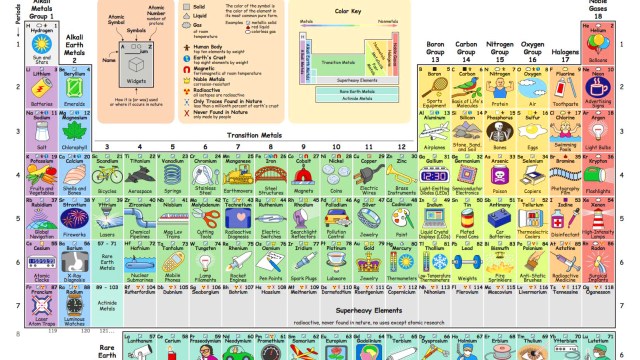Dark matter theory triumphs in sweeping new study
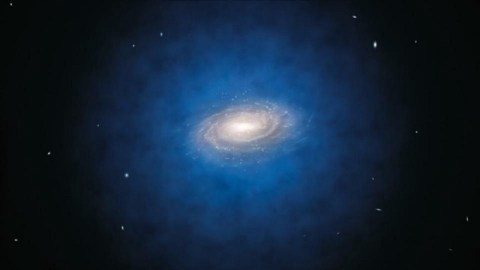
When a phenomenon moves from “empirical correlation” to “theoretically explained,” that’s one of the biggest deals in science!
“Space and time may have a structure as intricate as the fauna of a rich ecosystem, but on a scale far larger than the horizon of our observations.”
–Martin Rees
When you look out at the Universe, all you see is matter and light. The stars, galaxies, plasmas, and unusual astrophysical objects all emit radiation from across the electromagnetic spectrum; the dust, gas, and neutral atoms absorb it. Yet what we infer from viewing them, particularly on the largest scales, tells us that there’s much more than what we presently perceive. In addition to matter and light, there’s got to be dark energy, a form of energy inherent to the fabric of space itself that causes the expanding Universe to accelerate, and a significant amount of dark matter: massive, clustering particles that are invisible to light. Dark matter can do many things, but one prediction it’s always struggled with is exactly reproducing how galaxies are observed to rotate. It’s been a problem for decades, from the 1970s until 2017. But as of June 23rd, a new paper claims to have finally solved the problem of galactic rotation at long last.
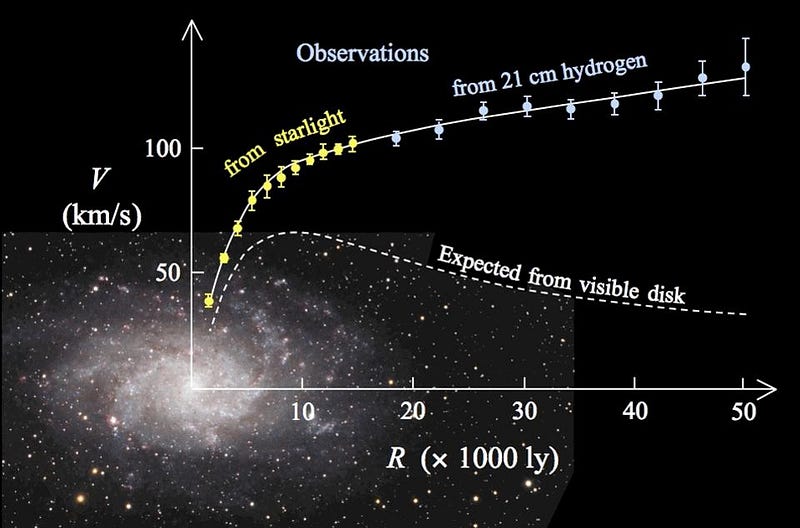
Since 1970, it’s been known that galaxies don’t just rotate, but they rotate with speeds too quick, particularly at the outskirts, for what normal matter alone can account for. Nearly half a century of studies have shown that if dark matter exists, it should form diffuse, massive halos that extend much farther than the visible disks and elliptical swarms do, with the gravity of both dark and normal matter affecting the galaxies’ motion. While correlations were measured between various properties that galaxies possessed:
- The Tully-Fisher relation, which correlates brightness with rotation speed for spiral galaxies,
- The Faber-Jackson and Fundamental Plane relations, which correlate luminosity with velocity dispersions for elliptical galaxies,
- The galaxy stellar mass function, which relates a galaxy’s luminosity to its mass over time, size, metallicity, and galaxy type,
there was no successful link between dark matter theory/simulations and these relations.
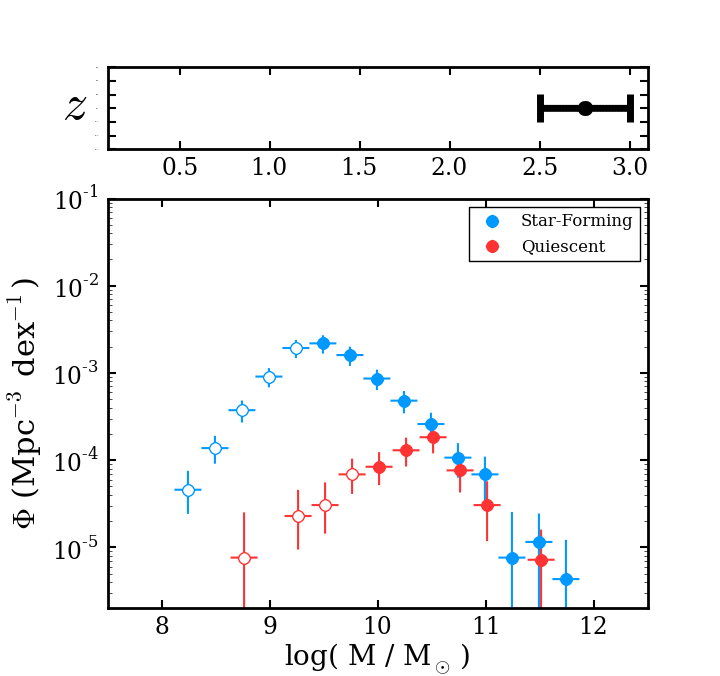
As better data on large cosmic scales came in, however, it became clear that dark matter was good for a whole slew of things that all of its alternatives weren’t. In particular, dark matter was able to explain:
- The individual motions of galaxies within groups and clusters,
- The gravitational bending-of-light by large collections of galaxies,
- The separation between mass and normal matter in colliding galaxy clusters,
- The clustering, filamentary, and cosmic-void-filled structure of the Universe on the largest scales,
- The likelihood of finding two galaxies a fixed distance apart from one another, and
- The pattern of fluctuations in the Cosmic Microwave Background.
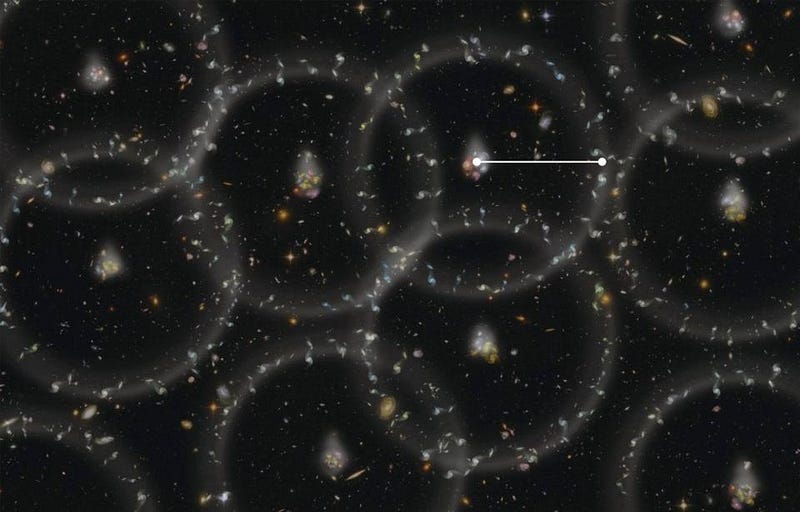
Neither a modification of gravity, nor a tweaking of neutrino properties, nor the addition of a new force law could explain these observations together. In all cases, the Universe as we see it still needed dark matter.

And yet, there was a problem. On scales of individual galaxies, the halo that dark matter predicted failed to reproduce the internal motions of galaxies in gory detail. Either the predictions were for too little mass at the edges, meaning the rotation curves should have fallen, or there was too much mass in the core, known as the cusp-core problem.

If dark matter wants to emerge victorious, it needs to explain all the observations, not just the overwhelming majority. That includes the observations on scales of individual galaxies, not just larger cosmic scales. The way you’d hope to reconcile theory and observations would be to simulate, with great accuracy, the evolution of the Universe from the well-understood initial conditions at early times to the rich structure of the present. When those simulations and what we observe match up, that’s when we’ll know we’re on the right track.
That’s exactly what the new study by A. Cattaneo et al. attempts to do. By starting with a mix of normal matter, dark matter, dark energy, radiation, neutrinos, and the seed fluctuations that satellites like Planck observe, it uses a combination of simulation and theoretical calculations to evolve the Universe to the present day. At every different epoch in cosmic history, the study can extract how gas falls onto and collects within galaxies, how the galaxies evolve in shape, how star formation and stellar formation takes place, and how observable quantities like luminosity (from the stellar population) and internal velocities (from gravitational properties) ought to be related.

Previous attempts at studies like this have been able to reproduce a large number of these relationships successfully, but the Tully-Fisher relation, which relates luminosity to rotation speed for spiral galaxies, has always been elusive. That’s the biggest advance of the Cattaneo team’s new study; they solve that problem at last! In particular, their simulation models all the relevant behavior in a way no other has done:
As the rotation speed depends not only on the virial velocity but also on the ratio of baryons to dark matter within a galaxy, our calculation predicts a different Tully-Fisher relation from models in which the rotation speed is proportional to the virial velocity. This is why GalICS 2.0 is able to reproduce the galaxy stellar mass function and the Tully-Fisher relation simultaneously.
When their simulations (below, in solid lines) are compared with the data, the agreement is staggering, from very high-mass galaxies down to tiny ones less than 0.1% the mass of the Milky Way.
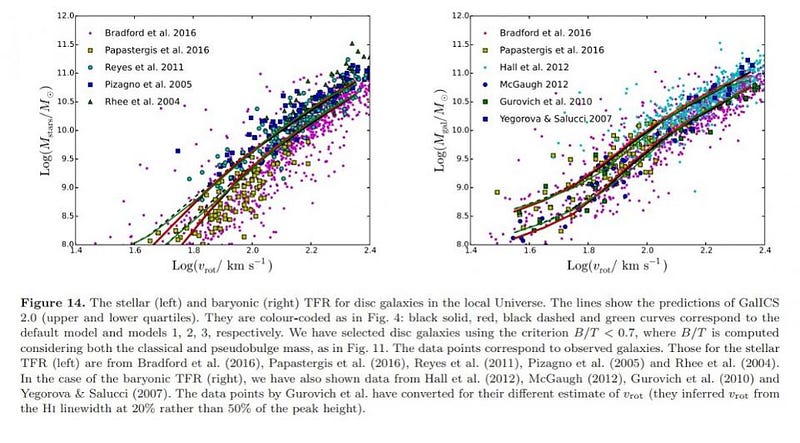
By getting the galaxy stellar mass function correct simultaneously, this team may have just made an incredible breakthrough towards reconciling how dark matter works on the scales of individual galaxies and below. There will still be frontiers where dark matter needs to go — such as galaxies too low in mass to appear in this study or the extreme outskirts, beyond the stars, of rotating galaxies — in order to definitely work well in every regime. Even then, the most extreme skeptics may only be convinced by a direct detection of the particles that compose dark matter, something that experiments may not be able to do.

It’s a revolutionary breakthrough that dark matter can reproduce both the relationships between luminosity and galactic speeds and the stellar mass function in galaxies simultaneously, as this new study accomplishes for the first time. By incorporating advanced techniques and more detailed physical models and the interplay between different components, relations that has only been observed, never explained, are finally seen to emerge. If we can throw our cosmic ingredients into a simulation and get out the Universe exactly as we observe it, that’s as big a success for our theories and models as one can ask for.
For those of you betting against dark matter, look out. It’s just conquered perhaps its biggest obstacle to success, providing a physical mechanism for how stellar light and galactic rotation go together at last.
Ethan Siegel is the author of Beyond the Galaxy and Treknology. You can pre-order his third book, currently in development: the Encyclopaedia Cosmologica.





